Introduction
You’re not alone. Your computer is getting slower and slower, but you don’t know how to speed it up. You probably think that it’s something only your computer repair guy can do (or maybe even your tech-savvy friends) and that there’s a limited window of opportunity for making improvements before the thing gets totally useless. This guide will show you how to make your old computer run like new again using a few tricks and tweaks no one ever thought about before!
So let’s get started!
A slow PC is often the culprit of your inefficiency and bad moods during work. Sometimes, you may even want to throw this your laptop out of the window because of the frozen tabs, stuttered animations, and splashed screens. How do I fix a slow PC running Windows 10 or Windows 11? Here are 8 tips to make your computer faster without having to spend anything.
Why is my Windows running slow?
• Your computer is running out of memory (RAM)
• Your PC mode settings
• Too many startup items and background programs
• Useless features or animations
• Insufficient disk space
• Cluttered registry
• Malware and Virus Infection
• Unneeded third-party software
How to speed up a Windows Computer
• Close unused programs from the System Tray
Check the system tray if there are programs that are running in the background that you do not need. It just consumes computer resources.
1. On the lower-right corner of your desktop, click the arrow pointing upwards to show the system tray.
2. Right-click the selected program that you do not need running, and then choose Quit, Close, or Exit.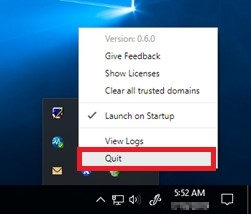
• Clean out Registry
Registry stores the setting information of the system and application programs running in Windows. As early as Windows 3.0 introduced OLE technology, the registry has appeared. Windows NT was the first operating system to make extensive use of the registry at the system level. However, since the beginning of the Microsoft Windows 95 operating system, the registry has been a critical database that will continue to play a role in the subsequent operating systems.
The command to open the registry is: Regedit or regedit.exe, regedt32 or regedt32.exe
You can click the operation in the START menu (WINDOWS + R), and then type regedit or regedit.exe and click OK to open the registry editor.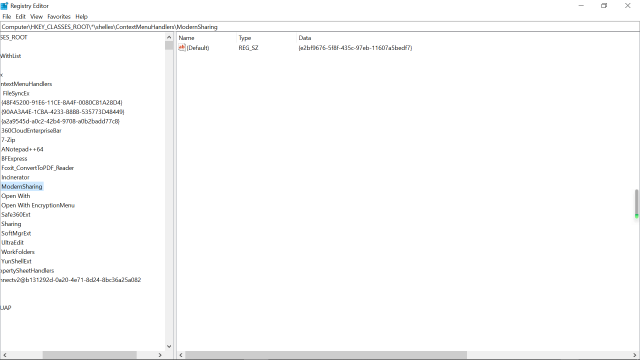
A WORD OF CAUTION: Editing the registry manually is risky. A mistake can lead to system-level interruptions. Before cleaning the registry, it is recommended that a professional registry cleaner is used.
Disable programs from the System Startup
Startup items are programs that the system will run once your computer is ON. When you download and install software, running the program during start-up is usually a default choice. Therefore, if the software is not commonly used and you do not need to use it every time you start your PC, you can remove the check because it can slow down system speed. If you forgot to remove the check when installing the application, you can also make changes using the Task Manager.
1. On your keyboard, press the CTRL + ALT + DELETE keys, and then choose Task Manager.
2. Click the Startup tab, and then select the program that you do not need running.
3. Click Disable.
You can also see the first tab named “Processes” in the picture above. Too many programs running simultaneously can slow down the system speed as well. Some programs may continue running in the background even after you have closed them. Under the “Processes” tab, you can select them and click ‘End task’ at the bottom right. However, be careful about this action because you might lose some important processes needed to run Windows.
Update Windows Operating System
Make sure your programs and software are up-to-date. These updates not only fix bugs but also bring new features, and ensure your computer is secure.
Delete unnecessary files
Delete files that you are not using to save disk space.
1. Find the Recycle Bin icon on the desktop.
2. Right-click (or press and hold), and then select Empty Recycle Bin.
Perform Disk Cleanup
Too many junk files, useless big files, and duplicate files usually cause insufficient disk space. Running Disk Cleanup, at least once a month helps your computer speed up and improve its performance by removing unnecessary files, including temporary files. To save gigabytes of disk space for things you really need, you should clean them regularly to free up space.
1. On your keyboard, press the Windows + R keys.
2. In the Open field, type cleanmgr, then press ENTER. The Disk Cleanup window should appear.
3. Select the drive that you want to clean up, and then click OK.
4. In the Disk Cleanup dialog box in the Description section, select Clean up system files.
5. Select the drive that you want to clean up, and then click OK.
6. On the Disk Cleanup tab, check the boxes for the file types that you want to delete, and then click OK.
7. In the message that appears, click Delete files.
Windows 10 now has the storage sense function where you can remove unnecessary files automatically.
Enter Settings > System > Storage, and then turn ON the Storage sense function to allow Windows to clean up temporary files automatically. It can be set to run automatically every day, every fortnight, every month, or every two months.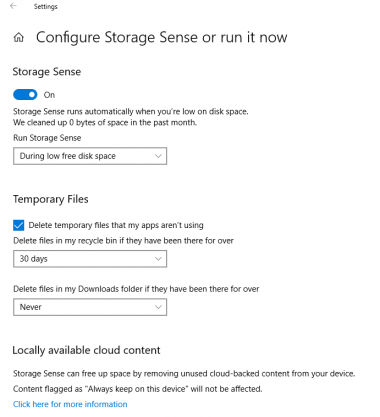
Defragment your Hard Disk
Files on your hard drive become fragmented over time and your computer will be looking at multiple places for the pieces which could make your computer run slower. Defragmenting puts those files back together so your system can run more efficiently.
1. On your keyboard, press the Windows + R keys.
2. In the Open field, type dfrgui, then press ENTER.
3. Select your hard drive, and then click Analyze.
4. Once done, click Optimize.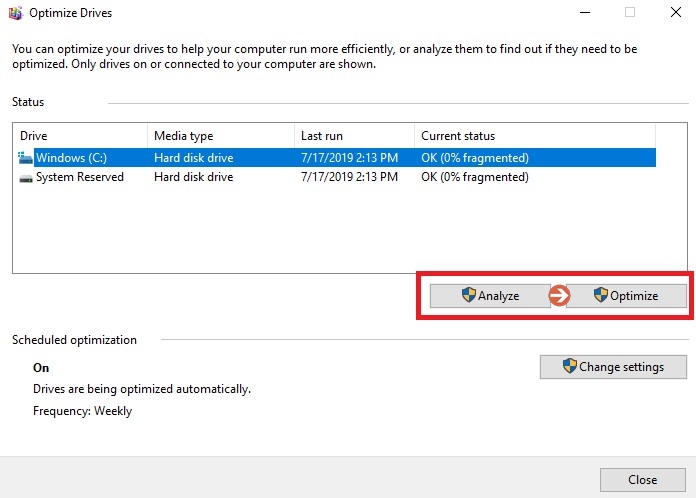
Uninstall programs you do not use
Unused programs might still include background processes, autostart entries, and other system services that could slow down your computer. It will also save you disk space.
1. On your keyboard, press the Windows + R keys.
2. In the Open field, type appwiz.cpl, then press ENTER.
3. Select the program that you are not using anymore, and then click Uninstall.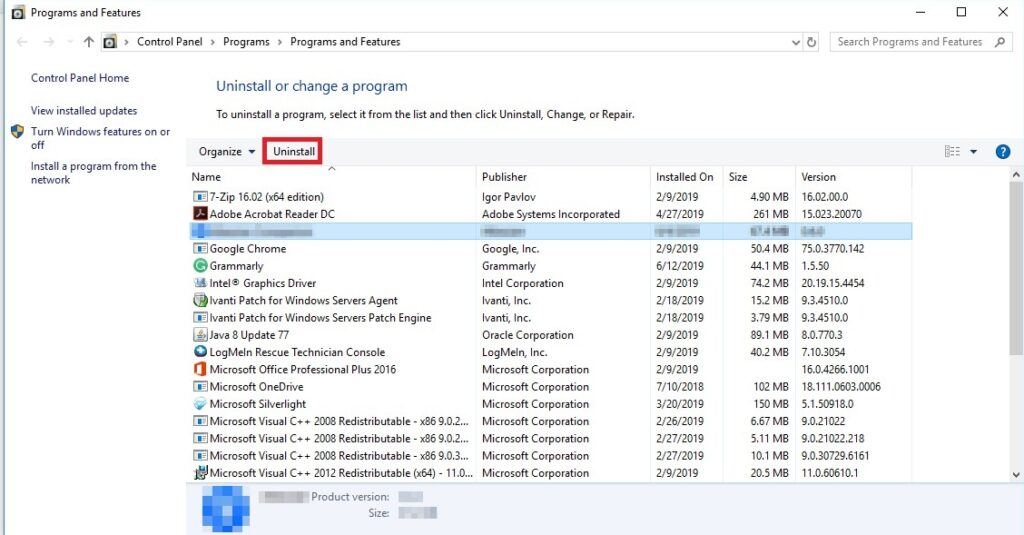
Check your computer for malware
They can slow down and potentially harm your computer. Check if it is infected by having a good antivirus software installed.
Trend Micro offers several options to consider. You can also click the button below to get free and effective protection from malware and web threats.
Disable unnecessary animations
Windows animations help applications look sleeker and refined, although this also uses additional computer resources that slow down your computer.
1. On your keyboard, press the Windows + X keys.
2. Choose System from the list.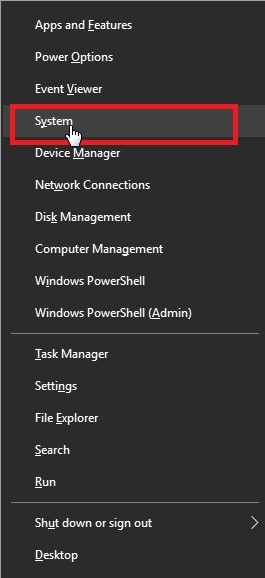
3. In the Search field, type Performance, and then select Adjust the appearance and performance of Windows.
4. Under the Visual Effects tab, choose Adjust for best performance.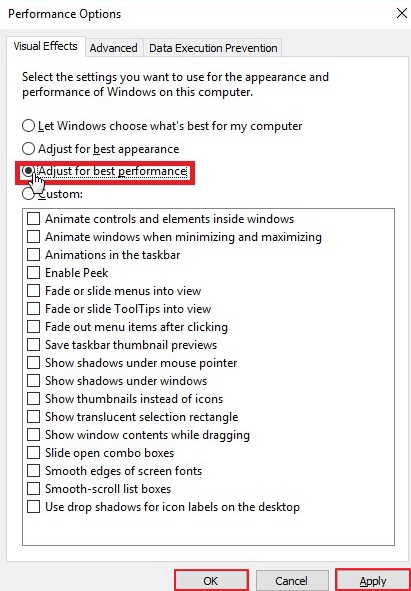
5. Click Apply, and then click OK.
Disable third-party services
If you installed a lot of software on your PC, the system may become chaotic and some unexpected problems might occur. For example, several security applications running at the same time can create conflict that makes the system misbehave. You can disable all third-party software services and only keep the system itself. The system status will also be called “Clean Boot.”
1. Press Windows + R and type msconfig.
2. Open System Configuration, go to the Services tab and put a tick in the Hide all Microsoft services and click Disable all.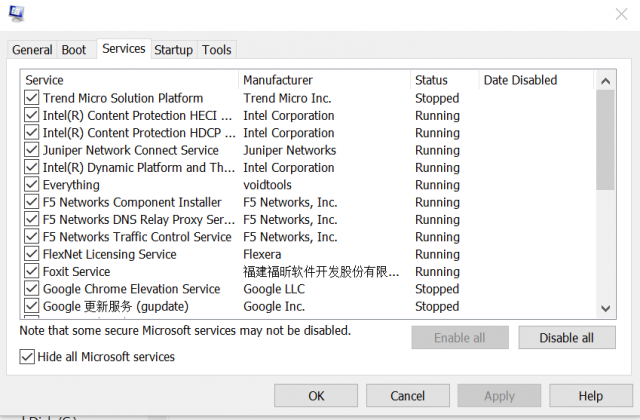
Get an SSD.

SSDs are a great way to get your computer running faster than it ever has. They’re faster than traditional hard drives, which means you can load programs and data faster. They also have better battery life than traditional hard drives, so you won’t have to keep plugging in the power cord as often.
SSDs aren’t cheap–they cost between $100 and $200 (depending on the brand), but they’ll save you money in the long run by making your computer feel more responsive and reducing its power usage overall. In addition, these devices tend to be more reliable than their HDD counterparts; if something goes wrong with one that has an SSD installed instead of a mechanical drive inside itself then getting rid of it would be much easier because there won’t be any moving parts involved like those found on mechanical drives (which may break down over time).

Give your RAM a boost.

RAM is the lifeblood of your computer. It’s the temporary storage space where your computer stores data while it’s working on it, and if you want to speed up your old machine, RAM is a great place to start.
The most important thing about upgrading RAM is that you need to make sure that all of the other parts of your system are compatible with higher speeds. For example: If you’re installing new RAM into an older Alienware laptop, don’t try installing two sticks at once! This can cause issues with overheating or compatibility issues with other components in your machine (like ports).
You should also keep in mind that when dealing with any type of hardware upgrade such as this one for older computers – whether it be replacing an outdated video card or adding more memory – there may still be some bugs and glitches left behind by their original manufacturers which could cause unwanted behavior during operation through software updates/upgrades etc..
Clean out your case to improve airflow.
A clean case will improve airflow and allow your computer to cool itself more efficiently. You can use compressed air to blow out dust from the case, or you can use a vacuum cleaner. If you have a lot of dust buildup in your fans (the fan on the side), then it’s best to remove them from their mounts and clean them with compressed air or canned air as well.
You don’t always need a new computer to get faster performance, we’ll show you how to make an old PC run faster.
If you don’t have a new computer, don’t worry–we’ll show you how to make an old PC run faster.
To speed up your old system and reduce lag, there are three things we recommend doing:
- Replace the hard drive with an SSD (Solid State Drive). This will improve boot times and load times significantly by allowing for faster data transfers between the computer’s RAM and storage device. If your current hard drive is too big for what you need it for, consider switching to a smaller one that meets those requirements instead of buying a new one altogether!
- Upgrade or install more RAM if necessary (up to 16GB). While 16GB may seem like overkill now that we’re talking about performance increases here, remember this is just one step up from 8GB; without upgrading your RAM count first though…
Conclusion
If you’re looking to make your old PC run faster, there are a few tricks you can try. First off, defragmenting and deleting junk files will help the hard drive run more smoothly. Also cleaning up startup programs can improve performance, so if you have one of those annoying programs that comes up every time you turn on your computer be sure to get rid of it! Finally getting an SSD or upgrading RAM are great ways to speed things up even further.

